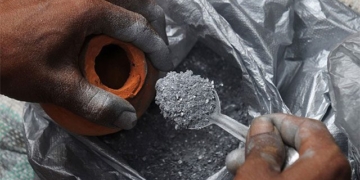Researchers have shed light on the identity of a Roman emperor inscribed on ancient coins dating back to the 3rd century.
The coins bearing the name and image of the historical figure Sponsian were once thought to be the work of forgers in the 18th century. Experts even claimed that Sponsian was not a real historical figure, according to The Guardian.
However, a recent scientific analysis has concluded that these coins are authentic artifacts from the 3rd century. Furthermore, researchers also suspect that Emperor Sponsian was indeed real.
Professor Paul Pearson, the lead researcher, stated, “We are very confident that they are genuine. Our evidence suggests that Sponsian ruled the region of Dacia – a gold mining area – within the Roman Empire. At that time, the Roman Empire was experiencing civil wars, and its borders were ravaged by invaders.”
The coin collection was excavated in Transylvania (now part of Romania) in 1713. Some coins bear the images of actual Roman emperors from the 3rd century, such as Gordian III and Philip the Arab. However, among them are four coins featuring the name and image of Sponsian, who does not appear in any historical records.
When the coins were first discovered, they were considered genuine. However, since the mid-19th century, the crude design and jumbled inscriptions on the coins have raised suspicions.
One expert suggested that they were the work of a sophisticated forger from Vienna. According to this expert, the forger invented an emperor to attract collectors. This viewpoint later gained widespread acceptance.

The coin believed to depict a Roman emperor named Sponsian. (Photo: UNIVERSITY OF GLASGOW).
According to Professor Pearson, based on the gold weight of the coins, they hold value. This collection is valued at $20,000 in modern terms. “If they are forgeries, then the forgers must have spent a significant amount to create them,” Professor Pearson remarked.
When examined under high magnification using optical imaging and electron microscopy, the coins showed wear similar to that of genuine coins. This proves they were in circulation for several years.
The minerals on the surface of the coins correspond to their being buried for a long time. Additionally, scientists discovered sulfate crystals – a type of crystal that typically forms when an object is deprived of oxygen for an extended period but suddenly comes into contact with air again.
However, Professor Pearson stated that the identity of Sponsian remains “speculative.”
Researchers believe Sponsian was a military leader who held power in Roman territory and established a local mint.
Professor Pearson said, “He assumed the title of supreme military commander – which was reserved for emperors. If we accept self-proclaimed Roman emperors, then he is a Roman emperor.”

















































